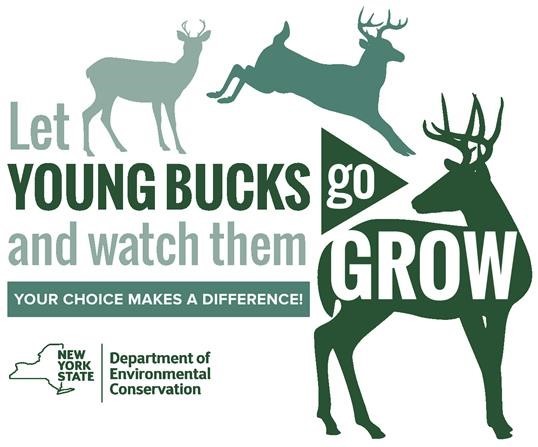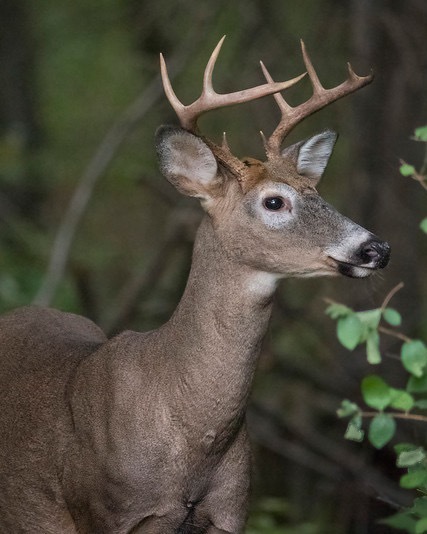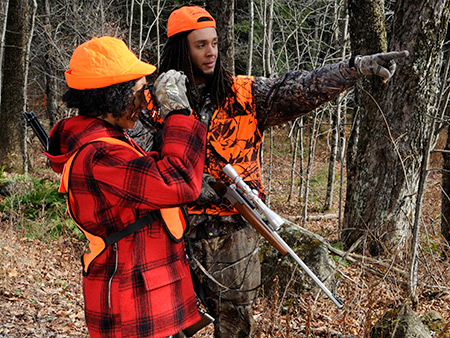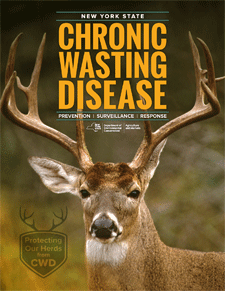Hunting & Trapping Newsletter
The New York State Department of Environmental Conservation sent this bulletin on 11/21/2018 11:18 AM EST |
| DEC Delivers - Information to keep you connected and informed from the NYS Department of Environmental Conservation |
| Share or view as a web page || Update preferences or unsubscribe |
Hunting & Trapping Newsletter |
Southern Zone Big Game Season Underway
The 2018 regular deer and bear hunting seasons in New York's Southern Zone begin at sunrise on Saturday, Nov. 17, and continue through Sunday, Dec. 9. The Southern Zone regular season is New York's most popular hunting season, with an estimated 85 percent of New York's nearly 600,000 licensed hunters participating. This season accounts for nearly 60 percent of the total statewide deer harvest and 30 to 60 percent of the statewide bear harvest. Following the regular deer and bear seasons in the Southern Zone, late bowhunting and muzzleloading seasons run from Dec.10 through Dec.18. Hunters taking part in these special seasons must possess a hunting license and either bowhunting or muzzleloading privileges. In the Northern Zone, the regular deer and bear hunting season opened Oct. 20 and will close at sunset on Dec. 2. The Northern Zone includes the Adirondacks, Tug Hill Plateau, Eastern Lake Ontario Plain, and the Champlain and St. Lawrence valleys. A late bowhunting and muzzleloading season for deer will be open in portions of the Northern Zone from Dec. 3 to Dec. 9. DEC encourages New York hunters to voluntarily pass up shots at young, small-antlered bucks in favor of letting them grow to be older, larger bucks. Hunters are making a difference for the future of the deer herd, and this change in hunting habits will increase their likelihood of seeing older, larger bucks by choosing to Let Young Bucks Go and Watch Them Grow. Report Your Harvest: Take It – Tag It – Report It
Hunter contributions to deer and bear management don’t end when an animal is harvested. DEC requires successful hunters to report their deer and bear harvest within seven days. These reports provide essential information about when and where the animals were taken. Failure to report is a violation of the Environmental Conservation Law (ECL), and it reduces the data DEC uses to manage deer and bear populations. Hunters may report via DEC's online Game Harvest Reporting system or by calling the toll-free automated reporting system at 1-866-GAME-RPT (1-866-426-3778). Photo credit - Art Kirsch
DEC Encourages Hunter Safety
DEC also encourages all hunters to wear blaze orange or blaze pink to make themselves more visible to other hunters. Hunters who wear hunter orange are seven times less likely to be shot. When hunting in tree stands, use a safety harness and a climbing belt, as most tree stand accidents occur when hunters are climbing in and out of the stand. Also, hunters should never climb in or out of a tree stand with a loaded firearm. DEC would like to remind hunters that the legal hours for big game hunting across the state run from official sunrise to sunset. It is the responsibility of hunters to know when those times are in their locations. Consult the DEC hunting guide, see the Sunrise-Sunset Table, use the DEC wildlife app or search weather data on the internet to find the official sunrise and sunset times for your area. Not only is it unsafe, but it is illegal to hunt deer and bear in the dark. Help Protect New York Deer from Chronic Wasting Disease
Though DEC has found no new, confirmed cases of Chronic Wasting Disease (CWD) in New York deer since 2005, hunters should take the threat of CWD seriously. CWD is always fatal to deer. If introduced, CWD could spread rapidly and be practically impossible to eliminate once established, threatening the future of New York’s deer population, hunting tradition, and many of the other benefits associated with deer. The most effective disease management strategy is to prevent CWD from entering New York. Help protect New York's deer herd from CWD by following these tips:
You can find more information about CWD on our Chronic Wasting Disease website. See our Chronic Wasting Disease (PDF) booklet to understand what NY is doing about CWD. Give the Gift of Nature
Habitat Supporter Patch- Whether you are an angler or hunter, birder or photographer, purchasing a $5 Habitat & Access Stamp is the perfect way to help conserve New York's remarkable wildlife heritage and habitat. The 2018-19 Habitat & Access Stamp features a barred owl. DEC Camping Gift Card- Campground gift cards are the perfect gift for those hard to buy outdoor-enthusiasts and are redeemable at all NYS DEC campgrounds. Trail Supporter Patch- For just $5, anyone can support the maintenance and enhancement of hiking, biking, horseback riding and other non-motorized trails on State lands. The current patch design is a red disc with white lettering which resembles trail markers used by DEC to mark east-west directional trails.
|



 While statistics show hunting in New York State is safer than ever, people make mistakes every year. Every hunting-related shooting incident is preventable, and DEC encourages hunters to use common sense this season, and remember what they were taught in their DEC Hunter Education Course. Follow the cardinal rules of firearms safety:
While statistics show hunting in New York State is safer than ever, people make mistakes every year. Every hunting-related shooting incident is preventable, and DEC encourages hunters to use common sense this season, and remember what they were taught in their DEC Hunter Education Course. Follow the cardinal rules of firearms safety:
 *BLACK FRIDAY/CYBER MONDAY SALE*
*BLACK FRIDAY/CYBER MONDAY SALE*